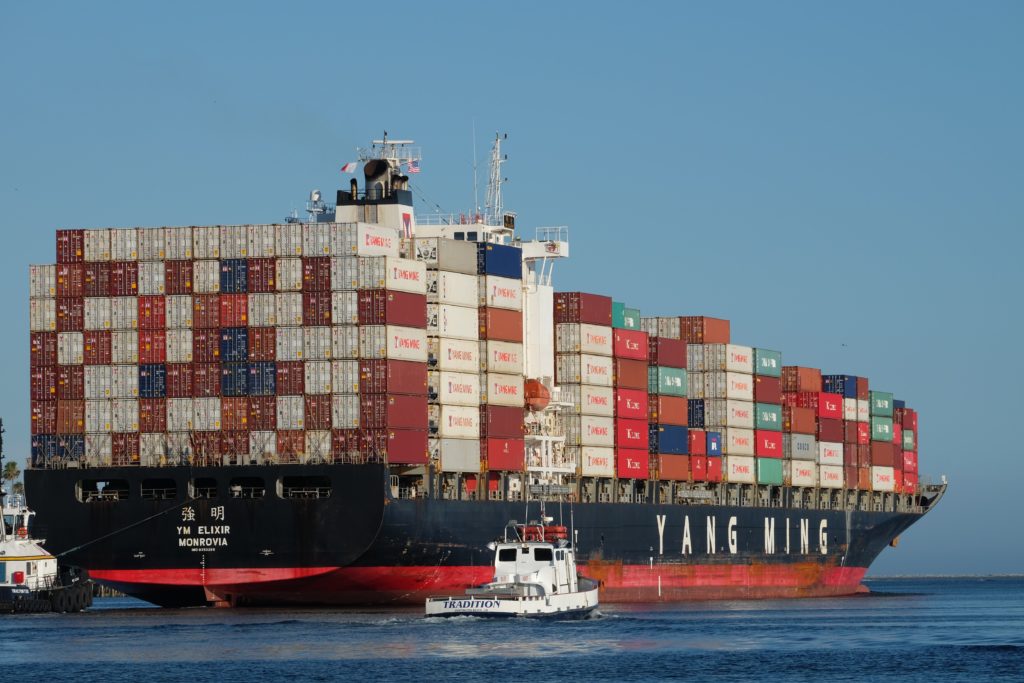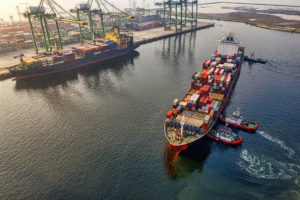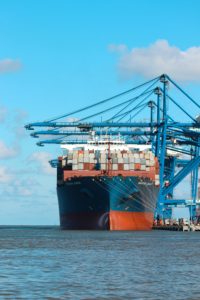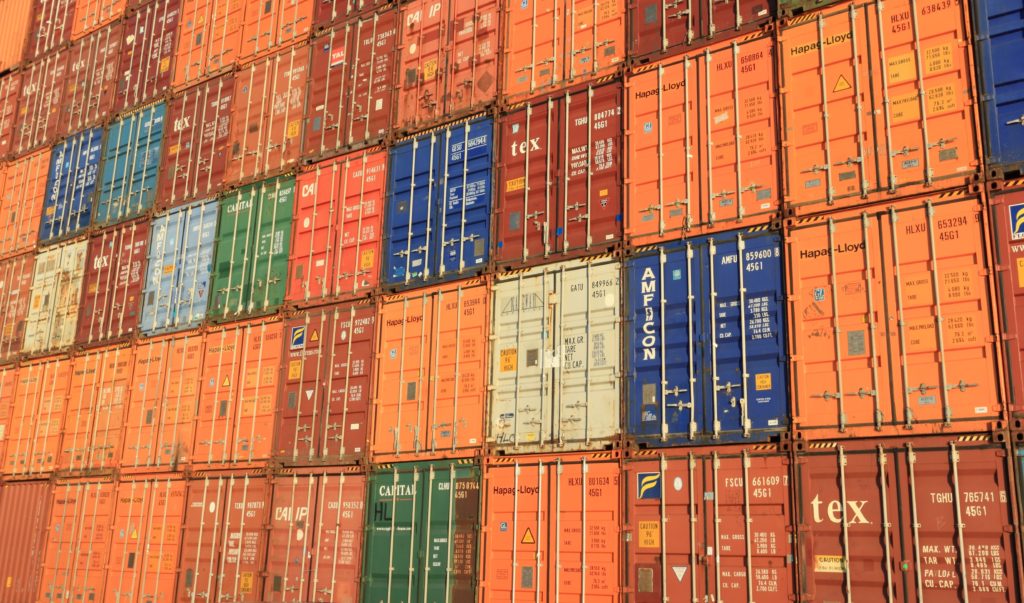Why is this important?
The transportation sector was responsible, prior to the Covid-19 pandemic, for approximately 24% of global CO2 emissions.(1) The sector also emits other greenhouse gases (GHG) such as methane, nitrogen oxides, sulphur dioxide and carbon monoxide as well as fine particles.
In 2016, road transport, including passengers and freight, accounted for 74% of the sector’s emissions.(2) Air and maritime transport accounted for around 12% and 11% of emissions respectively and rail transport, which has low emissions, accounted for around 1%.(3)
Freight includes all goods transport, from long-distance transport to relatively short deliveries in the last mile – i.e. from the last point of storage to the final customer. Highly dependent on fossil fuels and made up of complex logistics chains, freight represents a major decarbonisation challenge (4). Freight accounts for 40% of total CO2 emissions from the transport sector (5). 70% of freight travels by sea, 18% by road, 9% by rail, 2% on rivers and 0.25% by air (6) – even though the latter is by far the most carbon intensive.
What is the solution?
Freight transport is undergoing a transformation and various alternatives aimed at decarbonising the sector are currently being studied or tested. The solutions are technological and energy-related, but also structural and organisational.
Some solutions can be implemented by aid organisations. More systematic use of maritime transport, better planning of orders, development of decentralised storage capacities, choice of new routes or more frequent use of local purchases can optimise the entire supply chain, reduce distances travelled or avoid transport altogether. Furthermore, transport companies, as well as road, port and airport infrastructures, using alternative fuels or emission reduction technologies should be favoured.

To meditate
-
Is sea freight the best solution?
Today, there are no completely carbon-free long-distance freight transport modes. The best solution to reduce one’s carbon footprint is to minimise and optimise the use of international freight. The next step is to choose the mode of transport with the lowest environmental impact.
Since 2020, MSF France has reduced the volume of goods sent by air freight to increase the volume sent by sea freight.
Even if we must not ignore the greenhouse gas emissions and pollutants linked to maritime freight (sulphur and nitrogen oxides), this mode of transport remains one of the best environmental choices for long-distance freight.
Key solutions
-
#1 Choice of transport companies
Choose the most eco-responsible airlines or shipping companies, the most fuel-efficient or those using sustainable alternative fuels or technological innovations.
-
#2 Shipping freight
Favouring maritime transport, which emits less greenhouse gases, over air transport whenever possible. A precise and contextualised management of orders allows us to reduce the share of air freight in favour of sea freight.
-
#3 Order planning
Plan orders taking into account the entire supply lead time. Rigorous planning, made according to the context, will allow to rationalise the orders and to facilitate the recourse to maritime freight.
-
#4 Logistics hub
Develop logistics platforms and warehouses as close as possible to the operating sites and optimise the entire supply chain.
-
#5 Direct supplier deliveries
Increase “direct supplier” deliveries (from supplier to end customer) to avoid transit of goods through Europe.
-
#6 Refrigerated containers
Use refrigerated containers which now allow sensitive goods to be transported by ship while maintaining a controlled temperature throughout the journey.
-
#7 Maintenance and repair
Establish a local or regional repair and maintenance system for equipment by building human capacity in the field and selecting locally repairable items at the time of purchase.
-
#8 Local purchases
Favour local or regional purchases for certain products or items of equal quality to reduce the share of international transport.
-
#9 Alternative fuels
Choose alternative fuels that emit less than the heavy fuel oil usually used for ships, kerosene for aircrafts, or diesel and gasoline for road vehicles.
-
#10 Technological innovations
Use or encourage the use of technological innovations that reduce greenhouse gas emissions from vehicles (electric dock/gate connection, smoke purifiers, electric towing, bioethanol box).
-
#11 Low-emission sea freight
Whilst maritime freight has a much lower impact than air freight per tonne-km transported, it is essential to address emissions from maritime shipping to achieve decarbonisation goals and to limit further emissions due to the growth of the sector.
Tools and good practices
-
Environmentally Sustainable Humanitarian Logistics MOOC (Massive Open Online Course): Freight Transport
This course explores best practices when it comes to freight, providing the learner with simple strategies to reduce the environmental impact of this core activity.
Explore here -
Freight emission calculator for greenhouse gases and exhaust emissions, EcoTransIT
Emission calculator for greenhouse gases and exhaust emissions.
Explore here -
EU shipping's climate record, Transport & Environment, 2019
Explore here -
Comparison of cargo companies, Gliese Foundation, 2020
Explore here
To go further
-
Securing freight in a finite world, The Shift Project, 2022, (FR)
This document explains emissions related to freight and best practices for reducing them.
Explore here -
GHG emissions from different transportation modes, Ministry of Territorial Planning and Ecological Transition, (FR)
Explore here -
How can global freight reduce its ecological footprint?, Centre d’analyse stratégique, 2010, (FR)
Short paper on strategies to reduce the environmental impact of global transport.
Explore here -
Sustainable Aviation Fuels, ICAO
This resource explains how how sustainable aviation fuels can significantly reduce aviation’s lifecycle carbon emissions, support the sector’s long-term decarbonisation goals, and be deployed using existing aircraft and fuel infrastructure.
Explore here -
IOM global inventory of shipping greenhouse gas emissions from ships review , Citepa, 2020, (FR)
Explore here
Shift from Air to Sea freight

Low-emission sea freight

Transport

Sources
(1) UNFCCC, ‘Sustainable mobility’, UNFCCC, Available here, (accessed 20 August 2025).
(2) Ritchie, H., ‘Cars, planes, trains: where do CO2 emissions from transport come from’, Our World in Data, 2020, Available here, (accessed 20 August 2025).
(3) Ritchie, H., ‘Cars, planes, trains: where do CO2 emissions from transport come from’, Our World in Data, 2020, Available here, (accessed 20 August 2025).
(4) The Shift Project, ‘Assurer le fret dans un monde fini’, The Shift Project, 2022, Available here, (accessed 20 August 2025).
(5) Planète Énergies, ‘Transports mondiaux: émissions de CO2e en hausse’, Planète Énergies, 2020, Available here, (accessed 20 August 2025).
(6) Planète Énergies, ‘Transports mondiaux: émissions de CO2e en hausse’, Planète Énergies, 2020, Available here, (accessed 20 August 2025).
(7) CO2 Everything, ‘Freight, Air’, CO2 Everything, Available here, (accessed 20 August 2025).
(8) International Maritime Organization, ‘Initial IMO GHG Strategy’, International Maritime Organization, Available here, (accessed 20 August 2025).
(9) IATA, ‘Our commitment to Fly Net Zero by 2050’, IATA, Available here, (accessed 20 August 2025).
Acknowledgements
Last updated 20th of October 2025.
Share your success stories, suggestions, and comments with us! contact@climateactionaccelerator.org
Cover photo © Pixabay/Pexels.
Low-emission sea freight

Shift from Air to Sea freight

